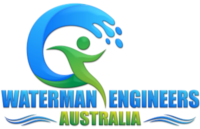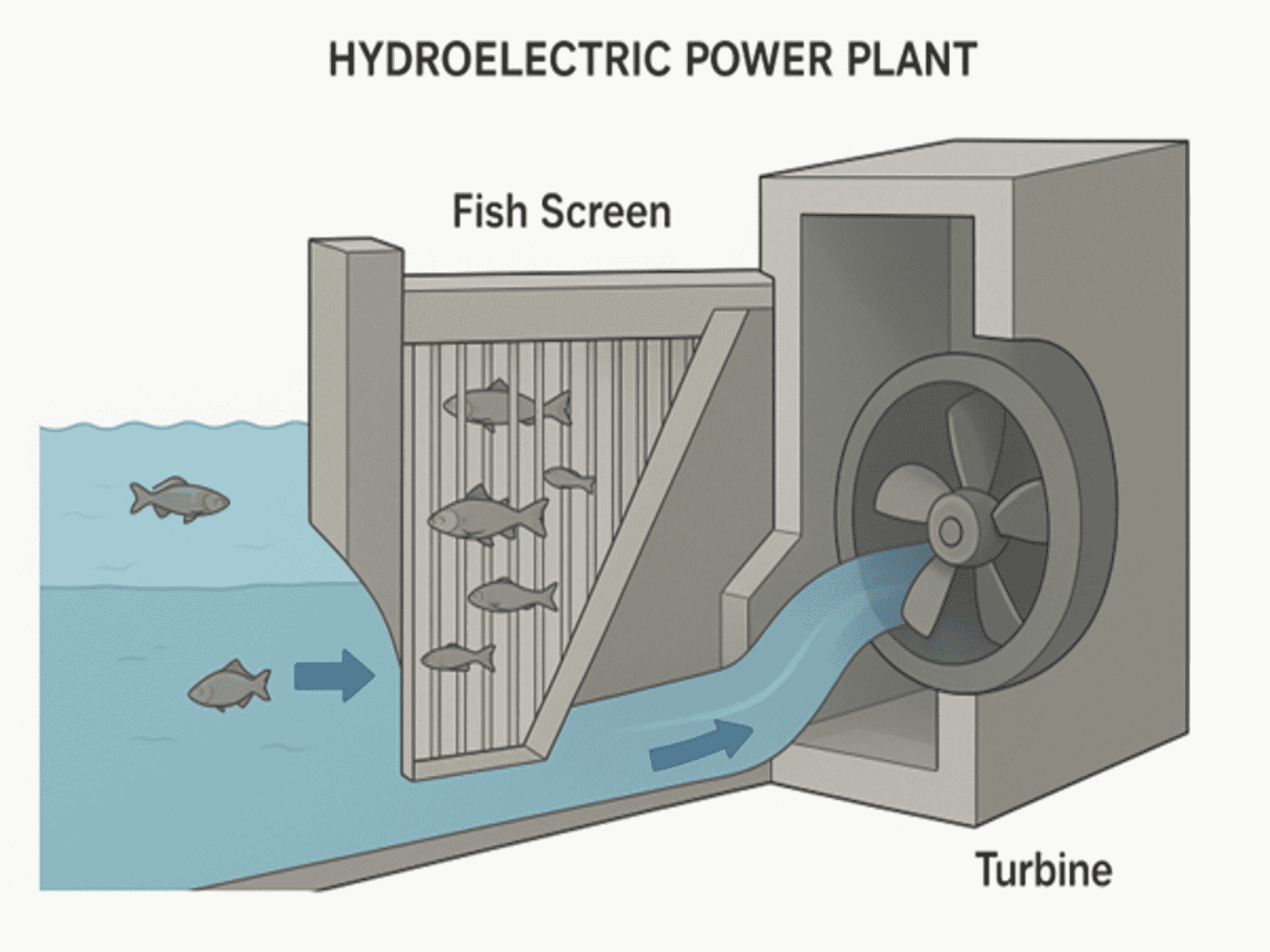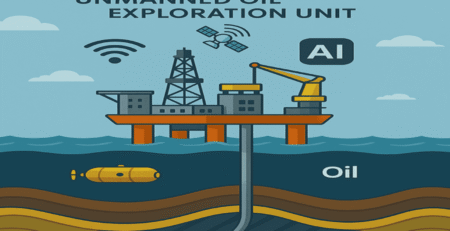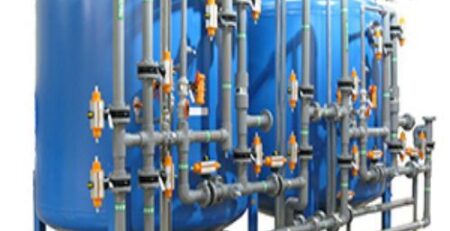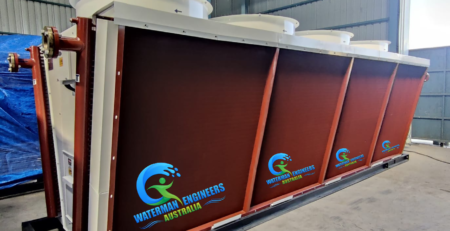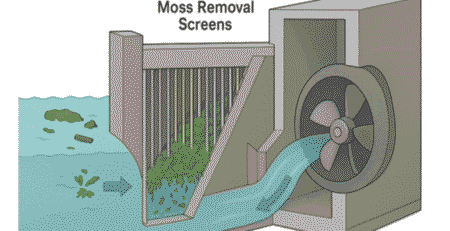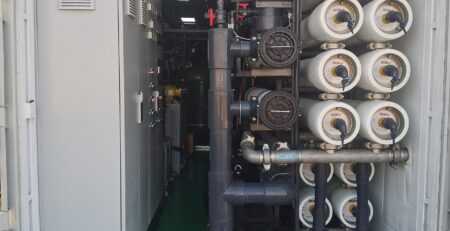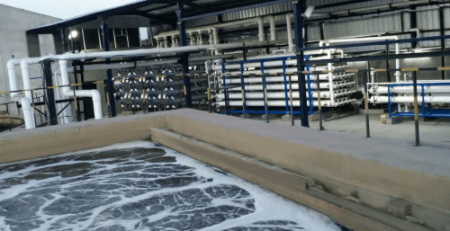Fish Screens in Hydropower Plants
Requirements and design considerations of fish screens in hydroelectric power plant turbines.
🐟 Fish Screens in Hydropower Plants
Fish screens are barrier systems placed at water intakes to prevent fish from being drawn into turbines, pumps, or penstocks. They are crucial for fish protection, environmental compliance, and sustainability of hydropower projects.
🔑 Objectives of Fish Screens
- Prevent Fish Entrapment & Entrainment
- Stop fish (juveniles & adults) from being drawn into turbines where they can be killed or injured.
- Maintain Natural Migration Paths
- Many species (salmon, trout, eels) have seasonal migration needs (upstream for spawning, downstream for juveniles).
- Environmental Compliance
- Regulatory authorities (US: FERC, NOAA; EU: Water Framework Directive; others worldwide) often mandate fish screens as part of hydropower licensing.
- Protect Aquatic Biodiversity
- Helps preserve natural ecosystems and supports sustainable hydropower operations.
🛠️ Types of Fish Screens
- Vertical Bar Screens / Trash Racks
- Bars with spacing (5–100 mm depending on species size).
- Effective for large fish but may allow juveniles through.
- Wedge Wire Screens
- Stainless steel with fine wedge slots (as small as 1–2 mm).
- Designed for small fish and eggs.
- Self-cleaning via water shear.
- Rotating Drum Screens
- Cylindrical drum covered with fine mesh.
- Rotates continuously; debris & fish guided away by brushes or water jets.
- Common in fish hatchery and small hydro intakes.
- Inclined Flat Plate Screens
- Slanted at 20–45° to flow, guiding fish laterally to bypass channels or fishways.
- Reduces impingement stress on fish.
- Behavioral Guidance Screens
- Use lights, bubbles, or sound to steer fish away from intakes.
- Supplemental to physical screens.
📏 Design Requirements for Fish Screens
1. Hydraulic Design
- Approach velocity:
- Must be low enough so fish can swim away.
- Typical regulatory limits:
- Juvenile salmonids: ≤ 0.4 ft/s (0.12 m/s).
- Other species: ≤ 1.0 ft/s (0.3 m/s).
- Sweeping velocity:
- Flow parallel to screen should be higher than approach velocity.
- Guides fish to bypass or fishway entrance.
2. Screen Openings
- Spacing depends on target species & life stage:
- Salmon fry: 2–3 mm.
- Juvenile fish: 6–10 mm.
- Adult fish: 25–100 mm.
3. Bypass Provisions
- Fish diverted by screens need a safe bypass route (fish ladder, fish-friendly channel, or pipe return).
- Must reintroduce fish downstream with minimal injury.
4. Cleaning Systems
- Automatic raking, brushing, or backwashing to prevent clogging by moss, debris, or silt.
- Ensures continuous operation.
5. Structural Strength
- Must withstand hydraulic loads, debris impact, and floods.
- Typically built from stainless steel, coated steel, or reinforced composites.
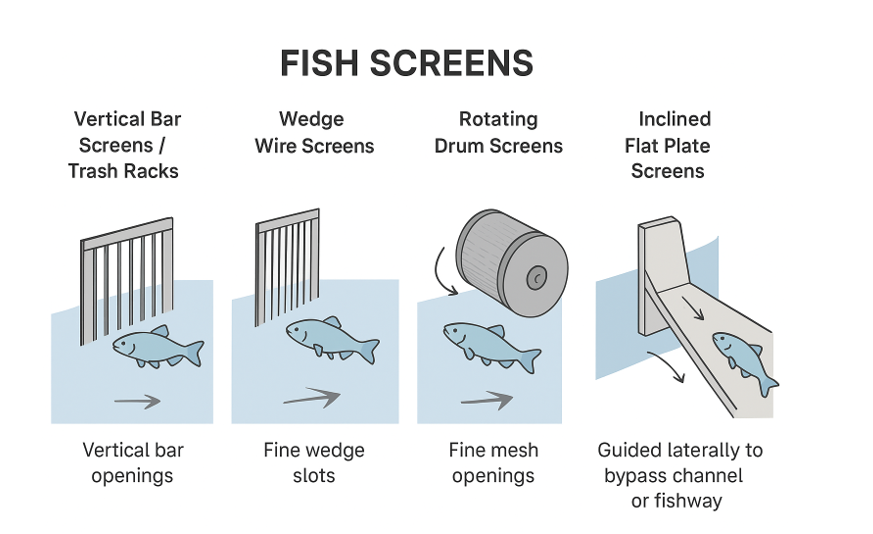
⚖️ Regulatory & Environmental Guidelines
- US (NOAA Fisheries, FERC): strict criteria for salmonid protection.
- EU Water Framework Directive: requires “good ecological status” of rivers, often mandating fish screens.
- Australia, India, Japan: site-specific requirements for migratory species.
Failure to comply → fines, license restrictions, or shutdowns.
🌍 Benefits of Fish Screens in Hydropower
- ✅ Protects fish populations & biodiversity.
- ✅ Improves sustainability and community acceptance.
- ✅ Prevents turbine damage from fish and debris.
- ✅ Reduces environmental litigation and regulatory delays.
- ✅ Enables “fish-friendly hydropower” branding.
✅ In summary:
Fish screens in hydroelectric plants are mandatory protective barriers designed to keep fish out of turbines, safeguard migration routes, and comply with environmental regulations. Their design must balance hydraulic efficiency, species protection, structural durability, and automated cleaning for reliable and sustainable operation.
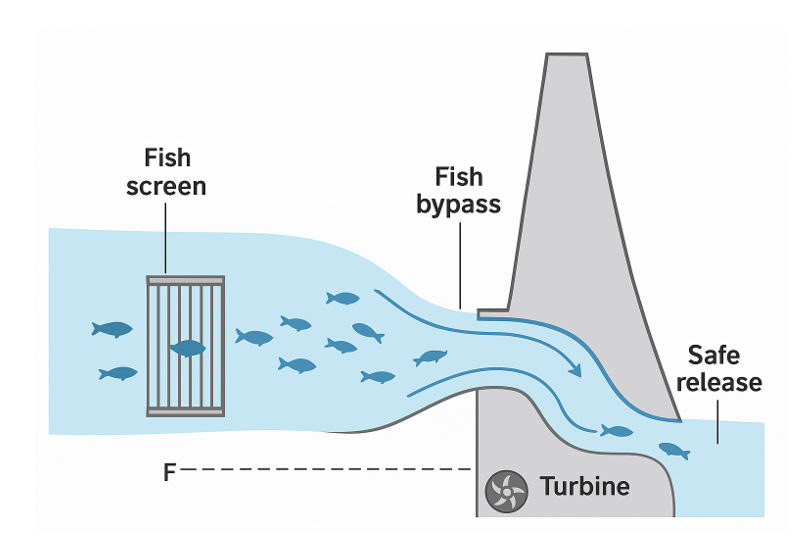
Fish Bypass Systems in hydroelectric plants, which are designed to work together with fish screens to ensure safe fish passage.
🐟 Fish Bypass Systems in Hydropower Plants
Fish bypass systems are structures or engineered pathways that guide fish around or over a dam/turbine intake, ensuring they can continue their migration routes (both upstream and downstream). They are essential for balancing hydropower generation with aquatic ecosystem conservation.
🔑 Objectives
- Allow Upstream Migration
- Adult fish return from oceans/lakes to spawning grounds in rivers.
- Barriers like dams must be bypassed.
- Allow Downstream Migration
- Juvenile fish (smolts, fry, eels) migrate downstream to oceans/lakes.
- Bypasses prevent them from being drawn into turbines.
- Reduce Mortality
- Provide safe alternatives to turbine passage.
- Minimize injury, stress, or disorientation.
Types of Fish Bypass Systems
1. Fish Ladders (Fishways)
- Stepped channels alongside dams.
- Allow fish to “climb” gradually upstream.
- Types:
- Pool-and-weir ladder: series of pools separated by weirs.
- Vertical slot ladder: fish swim through continuous slots.
- Denil ladder: baffles slow water, making passage easier.
➡️ Best for: salmon, trout, and strong swimmers.
2. Fish Elevators / Lifts
- Fish gather in a holding area.
- A water-filled elevator chamber lifts them above the dam.
- Released upstream.
➡️ Best for: High dams (>30 m) or weak swimming species.
3. Nature-like Fish Bypass Channels
- Man-made stream mimicking a natural river.
- Curved channel with riffles, pools, and resting areas.
- Provides both migration route and habitat.
➡️ Best for: multiple fish species, including non-salmonids.
4. Surface Bypasses / Spillways
- Surface channels (often near turbine intakes).
- Juvenile fish naturally migrate near surface → guided by screens and flow cues into bypass.
- Carried downstream past the dam safely.
➡️ Best for: juvenile salmonids, eels.
5. Guided Bypass Pipes & Conduits
- Fish screens guide fish laterally.
- Fish enter bypass entrance → conveyed through pipe or conduit.
- Discharged downstream at safe location (avoiding predators).
➡️ Best for: juvenile fish avoiding turbine entrainment.
📏 Key Design Requirements
- Attraction Flow: Fish must detect and be drawn to bypass entrance (5–10% of river flow is often allocated).
- Gentle Hydraulic Conditions: Avoid high velocities, turbulence, or pressure changes.
- Continuous Operation: Must work during migration seasons, day and night.
- Species-Specific Design: E.g., salmon need strong flows; eels need low-light, smooth surfaces.
- Monitoring Systems: Fish counters, sonar, or cameras verify effectiveness.
🌍 Examples Worldwide
- Bonneville Dam (USA): Fish ladders + juvenile bypass system.
- Elbe River (Germany): Nature-like bypass channels.
- Murray–Darling Basin (Australia): Fish lifts for native species.
- Bhakra Dam (India): Studies ongoing for upstream ladders.
✅ Benefits
- Maintains fish population sustainability.
- Complies with environmental and regulatory laws.
- Improves community acceptance of hydropower.
- Enables eco-friendly hydropower certification.
🔎 In summary:
Fish bypass systems are critical complements to fish screens. While screens prevent fish from entering turbines, bypasses provide safe alternative routes upstream and downstream, ensuring river continuity and ecological balance.
